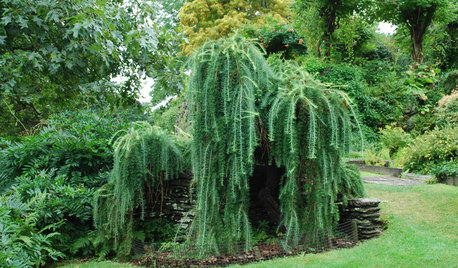I'm looking to plant conifers on my hillside property in El Dorado Hills, CA (Zone 9a), and am aiming for trees with relatively rapid growth that will achieve heights in excess of 50ft to screen out a large, 3-story house above me.
I've taken pictures of good looking specimens in two neighbors' yards, but unfortunately, aside from guessing "spruce" they can't tell me exactly what variety these trees are.
I spent a couple hours looking at images online trying to do my own IDs, and to my untrained eye, the first species, with its bunched, circular clusters of needles, looks a lot like the Western Larch ( Larix occidentalis ).
The second species, with fine, soft individually attached needles around the circumference of the branches, appears to be some sort of spruce, but I've been unable to narrow it down further.
My keyword searches of this forum didn't lead me to any answers, but did give me the impression that posters here are tremendously knowledgeable in such matters.
Could anyone help me ID these trees?
I'll try and attach my images in order, first the "larch" and then the "spruce": one close-up and long shot of each.
This post was edited by PiningAway on Mon, Nov 18, 13 at 20:56












PiningAwayOriginal Author
PiningAwayOriginal Author
Related Professionals
Deer Park Landscape Architects & Landscape Designers · Roosevelt Landscape Architects & Landscape Designers · Canton Landscape Contractors · Salem Landscape Contractors · Alpharetta Landscape Contractors · Ashburn Landscape Contractors · Berwyn Landscape Contractors · Clearlake Landscape Contractors · Doctor Phillips Landscape Contractors · New Baltimore Landscape Contractors · Oak Harbor Landscape Contractors · Old Saybrook Landscape Contractors · Pleasant Grove Landscape Contractors · Secaucus Landscape Contractors · Castaic Gardeners & Lawn CarePiningAwayOriginal Author
Smivies (Ontario - 5b)
PiningAwayOriginal Author
Smivies (Ontario - 5b)
ospreynn
PiningAwayOriginal Author
PiningAwayOriginal Author
ospreynn
ospreynn
mikebotann
pineresin
greenman28 NorCal 7b/8a